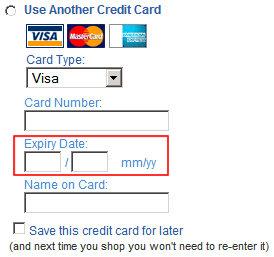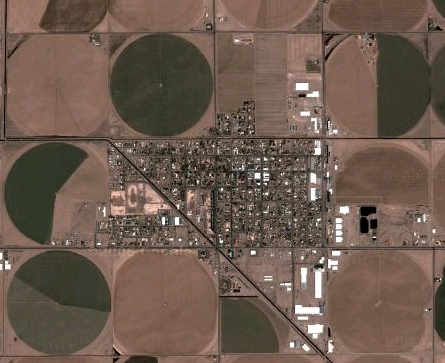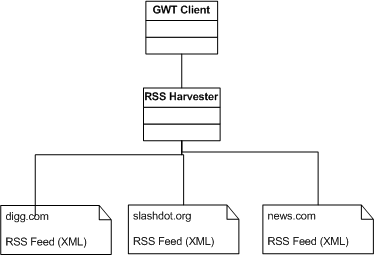Canadian Internet Usage
Friday, February 23, 2007
"We loves our Internet."
Everything you want to know about
Internet Usage in Canada.
Statistics Canada has to be one the most user unfriendly sites out there. It has improved, but good luck finding information quickly--you'll probably find the information you need, but it will take you a while.
By the looks of it, the search engine is an in-house solution. I don't know anything about the site's implementation, but I don't see why they wouldn't use a google search appliance (a Linux boxed solution). Why re-invent the wheel?
Vertical disintegration can be your friend...
UI Design and Technology Interaction Can Have an Impact on Revenues
Tuesday, February 20, 2007
Ecommerce is great, when it works. But it is similar to anything related to technology: when everything works everyone is happy, however, when something breaks the deficiencies are very noticeable, bad things happen, and we probably curse our dependency on technology.
In some cases, when something goes wrong lives are lost and millions of dollars are lost. For this entry, the consequences are not so dreary but I thought worth while analyzing.
UI Design and RevenuesTying revenues to UI design is not very easy. The problem is with performance measures, for example, how do you know that the location of the "buy" button in your site is costing you 10 sales out of 100.
Use Cases and focus groups can help identify those hard to find user interface issues. However, sometimes, minor things go unnoticed and are not really problems unless someone points them out.
Yesterday, I ran into a very common issue, but I never thought it was much of a problem until it was a problem for me. I was buying a few books from chapters.ca and when I came to the place to enter my credit card information I screwed up on the expiry date. The worst part of it all is that I didn't find out until 3 hours after I placed my order.
The problem I had was that I had too much control of the year field--it currently is a text field. In other words, the developer(s) of the chapters.ca application gave me too much credit and thought that I may be an expert at typing 2 digit numbers.
This is what the credit card entry fields look like:

I have highlighted the expiry date fields (text field types). The expiry date on my credit card is "07." I typed "97" then clicked the place order button promptly, without checking the information I had just typed in (hey, I'm buying online I have no time to waste).
In a typical QWERTY keyboard the 0 and 9 are right beside each other and I didn't find out until 3 hours later that I had entered "97." I got an email telling me that there was a problem with the expiry date of "XX/2097" and that my order was actually canceled.
The cancellation is a problem for chapters because there is no product differentiation on books and I can in fact get the same books at amazon.ca for the same price. So I went to amazon and placed the same order. This is what the credit card entry fields look like:

You can see that I have less control: drop downs only let me select a set of predefined dates, which is good in my case as I have less chance to screw up--and I didn't.
I'm not saying that amazon's site is better than chapters' (I buy things from both interchangeably) but in this case two issues made the difference of where I spent my money: first, I had too much control and I screwed up the date entry process, which can be fixed by using drop downs; and second, my order was canceled, no questions asked, which is probably much harder to fix. (The cancellation email read that there was a problem with the expiry date, my order was canceled, and if I really wanted I could place the order again.)
The latter, is probably an operational issue, and is probably intentional. I'm guessing that for chapters to keep my order open they need someone to take a phone call to rectify the problem, whatever it may be. However, chapters doesn't have an 800 number or any number, for that matter (at least, I couldn't find one on their site). Chapters.ca does business on the web, only (note that I mean the web site, not the actual brick and mortar stores).
As per the date field, as software engineers, we should make UIs as intuitive as they can be and assume that the user will screw up. Not because users are not smart, but because web application have too many things going on: links, buttons, images, etc. So we must anticipate and minimize the chances for something to go wrong (and something will go wrong), specially when there is money involved.
In this case, limiting my choices at checkout time to two clicks to find out my card's expiration date is much better than letting me enter an invalid year (I have four keys to press). But worst of all, letting me know 3 hours later that I had a problem with my submission, and in the process cancel my order and not have a real person to help rectify the problem so that I don't spend my money somewhere else.
Technology Interaction and RevenuesWhile buying online, there is the potential that we, as users, will make mistakes. The question is how will a company handle the issue and what it will do to rectify the mistake?
In my example above, chapters canceled my order and I had no way to talk to anyone to just correct the year of my card's expiry date. Because of this, I ordered the same items from chapter's competition, amazon. (Note that I already hypothesized why chapters canceled my order: it's probably cheaper to just cancel orders than hiring phone operators.)
My order wasn't in the thousands, however, if there are more customer that did the same thing I did, then something needs to be looked at to rectify the problem. (Actually, finding out if this is happening often is probably not that hard: chapters has all the data, it is just a matter to mine it properly.)
But the issue is not only the lost revenue of one transaction. The problem is that "future intentions" are affected by the experience with a company's technology. Research has found that if users' interactions with technology (in this case, the web site) are not satisfactory, users' future intentions are affected and it is more likely that paying customers will not come back.
This sounds obvious, but there have been quite a few empirical studies between customer satisfaction and repeat transactions (J.B. MacDonald, K. Smith.
Industrial Marketing Management 33, 2004, 107-116). My point is that not having someone to help out with the odd transaction, users will be less likely to use chapters' ecommerce site.
I will likely buy from chapters again, but this time I found it easier to just order from one of their competitors. My intention here is not to pick on what went wrong with chapters' site (like I said, when everything works, everyone is happy), but to highlight that a very minor design decision can have a big impact on revenues.
In this case, less choices in the user interface when typing an expiry date is probably the way to go. It means that orders from careless typers, like me, are not lost to the competition.
Colorado Circles
Sunday, February 18, 2007
Does anyone know what these circles are?

My take on them is that they are some sort of controlled agricultural circles. The most interesting part, I found, is that there is a city right in the middle of them.

How did I find them? Yesterday, I went to watch the movie "Breach" (the US spy movie) and after a little googling, I found that
Robert Hanssen is currently imprisoned for life at
ADX Florence (literally in the middle of no where) on the charge of treason and, of course, spying.
Once I found the location on google maps, I then started scrolling to the left of the prison to see what cities are around the maximum security prison. And there they were, in all their green glory. They look very pretty and eerie, in a pretty-eerie kind of way.
Java: GWT Example with RSS Feed Reader
Saturday, February 10, 2007
Source code.
 What is this?
What is this?This is the first iteration of an RSS feed reader using GWT and rsslibj.
This small application is AJAX based with an RPC call (GWT style) to a Java Servlet that harvests the three RSS feeds you see on the tabs. The idea is not new. A few news sites have similar tabbed panels for quick links and breaking news. This is my version.
Why?This week (today is Feb 10, 2007) yahoo released a tool to integrate RSS feeds. It's called pipes, and it lets users to visually mix and match RSS feeds. It's very
interesting.
This little app is nothing like yahoo's pipes. But the idea is the same: harvest RSS feeds for a common end.
My thought was to create a little widget that anyone can put on their web site and give visitors a taste of the owner's reading habits.
The architectureThe GWT client talks to a Servlet, which harvests the feeds and is part of the GWT callback that populates the AJAX client.
 The Code
The CodeIt's a trade secret, so if you want it, email me :)
I may actually publish it as a little tutorial for GWT and RSS feed readers.
Note that I broke my first GWT Example. I have to recompile it to use the latest GWT version.
Small e-business recommendations, or how to create an e-business web site
Thursday, February 08, 2007
I receive emails from time to time asking for advice on how to actually start or create a web site. Some are small businesses and some are for personal sites.
I don't have all the answer, but the best advice I can give for small business and personal sites always goes along the lines of using free tools, make your site about the content, and build a community around it.
This is easier said than done, but I think that sticking to these three tenets will make the experience actually enjoyable and it will be a great learning experience.
There are a few reasons why small businesses need to build a web presence or web site (or get someone like me to help them build it). However, most are probably not for e-commerce purposes. They should be created for e-business.
The main distinction is in the "commerce" part: when you are building an e-commerce site you are developing an application to interchange money directly between your customer and your business using the internet. And not every site is created for this purpose. Yes, it is true that you can use your web site as a new channel for sales, however, all products cannot be put into an electronic cart, specially if your product is a service. Though, your e-business site will help to make the sale, as it is helping to build relationships with your customers.
E-business is about integrating your web presence into your existing business strategy. Your business strategy encompasses your company's goals, product and market focus, value proposition, and core activities. Every business has a strategy even if it is not explicitly written down. So your web site has to complement your ongoing strategy, or make it part of your new strategy. Understanding the difference between creating a site because everyone has one and integrating the web into your business strategy is the key to a successful e-business web site.
So knowing the difference and understanding your needs, how do you go about building an e-business site?
Let me expand on the three tenets I mentioned above: use free tools, make your site about the content, and build a community around it.
ContentWeb surfing has always been about finding information and user driven interaction. The user has always had the ability to click on links and keep or stop using any web application. Obviously, a customer (or potential customer) visits a web site to find information, however, it will become very clear if the visit is adding any value to the experience. Hence, the more relevant content your web site has, the more valuable the visit will be.
CommunityIn a business setting, you have a captive audience as soon as someone arrives to your site. And your company is the main content. So depending on how much value you are adding to your customers, they will create a community around your site. This is tied into the content aspect above: if users find useful information, they are likely to become repeat visitors and if a web site is set up to build a community of customers, the users themselves will start providing content.
Free ToolsThere are too many open source tools available for free for small companies to lock themselves into proprietary technologies, or pay for expensive tools.
This is hard to explain, but let me give you an example: josesandoval.com is my business and personal web site. The main reason for the site to exist is to post my
resume and to reach possible clients.
josesandoval.com is a combination of different technologies put together to work as one. For example: I register my domain name in company X; I host all my files in company Y; I use blogger to publish my blog; I use FeedBurner to publish my RSS feed; I coded a small guestbook application using ASP and MS Access to serve as my message board; I use google's AdSense to generate revenue (very little revenue); and I use google's Analytics to keep track of who is visiting my site and from what geographical locations.
I could create everything myself, but this would take me a long time and my choices of technology would be limited. josesandoval.com would, in other words, be a
vertical integrated web site.
Small businesses' web sites cannot afford to be vertically integrated, and, most importantly, there is no need for it. At this point in the evolution of the internet the components and services available for free are quite robust and seem to work most of the time for any small business to create (or pay to have created) everything from scratch.
Most small business web sites require simple content management systems (you can find many out there;
exponent seems to be popular now a days); simple blogging solutions; simple message board system (
phpBB is very good for this); easy to use and set up web analysis tools (I recommend google's analytics).
Using different, readily available components gives you certain flexibility that proprietary tools don't. For example, if I don't like blogger, I can choose a different blogging technology and I only need to change one component in my web application. Obviously, there will be a cost to the change, however, it will be mostly my time.
In this model of using free components to build up a web site for business purposes, consulting firms (or smart high-school nephews serving the small business market) are left to be business advisors (identify the business strategy and effectively integrate it into the web presence) and technology integrators.
Anyone can create a web site (HTML is part of high school CS teaching now), but integrating all those HTML tags into your business is a bit more tricky: it requires a bit more understanding of how things work and what your business objectives are. So query your nephew throughly before you pay him :)
Final notesWhy would any company decide to be vertically integrated? The reasons vary, but the main one is control.
Vertical integration matters when control of the product or performance is the key to the success of a company. In other words, it is inadvisable or plain bad judgment to outsource your competitive advantage to someone else. However, if your clients' performance needs do not require you to control all construction of your product, using standard and readily available components is the way to go and, actually, the best way to serve your clients: you can concentrate on running your business and only use new technologies to complement your operation.
Even though I said at the beginning that the advice I give is for personal and small business sites, this doesn't mean that it cannot be applied to larger enterprises. In fact, these three tenets apply to larger corporations and have been able to successfully implement them, for example, Amazon has a great visitor-repeat ratio, google is able to create almost religious followings for their developer-centric tools, slashdot created a brand worth millions of dollars because of the community that gravitates around the site.
Obviously, the more money there is available the greater and more complex the application that can be created and the more competent the technology integrator needs to be. However, my whole argument in this entry is that small businesses can in fact create similar results by using existing, freely available technologies. The key is to know how to use them, where to find them, and why they need to be part of your small business strategy.
Moving from Vertical Integration to Virtual Integration
Saturday, February 03, 2007
I like to make up terms of different things that don't exist. For example, Virtual Integration only exist in my head and now this entry.
Before I start making stuff up, let me quickly and informally define vertical integration. A vertical integrated company is the one that likes or has to do everything under the sun, from manufacturing the screws that go into whatever widget the company is creating to managing the call centers that handle customer support. Vertical integration is the antithesis of outsourcing. There aren't that many completely vertical integrated companies, actually, but the ones that are do so because of control and costs (I'll write about this in a few days, so come back).
Now, what is virtual integration?
The concept shouldn't be alien to anyone. In a nutshell, I think of it as the next step of business-to-business (B2B) buyer-supplier relationship. I think of it as the next logical progression of supply chain integration.
There is a subtle difference, though, between what I consider virtual integration and supply chain integration. Mainly the what and how the integration is being accomplished.
The typical form of collaborative integration (supply chain integration) is that of sharing all information about your business with suppliers. Note that all doesn't mean all corporate intelligence. What I mean is the the sharing of information that makes it easier for your suppliers to sell you the things you need to carry on your business. For example, sharing your forecast sales with your suppliers allows them to make exactly what you need at the best price possible. Think of Just In Time (JIT) or Just In Sequence (JIS) manufacturing: you get what you need when you really needed.
Many large corporation make supply chain integration part of their corporate strategies. Toyota, for example, creates buyer-supplier relationship with part manufacturers that allows it to out-compete the large 3 car makers in North America. Aside from their streamlined processes, JIT is what makes them different from other car manufacturers.
How is supply chain integration accomplished? If you are interested in how integration between buyers and sellers takes place, read up on
Rosetta Net. The Rosetta Network "is a non-profit organization dedicated to the collaborative development and rapid deployment of open, e-business process standards that align processes within global trading networks. RosettaNet standards and services provide a common language for e-business transactions and the foundation for integrating critical processes among partners within the global supply chain."
It would seem that with the aid of protocols and the internet we would consider supply chain integration to be a virtual integration. However, I think of virtual integration at a higher level of integration. In other words, virtual integration (as I envision it) is the direct integration with your partners at design time and not just at manufacturing or buying time.
Lets fast forward to my envisioned future where vendors will likely be able to design and test products in a virtual-reality world. Imagine suppliers directly connected to Car Company X building virtual cars with virtually supplied parts to design centers across the world. (This is not too far fetch: Ferrari actually designs and tests the interior of their cars to assure a custom fit with the driver.)
The advent of faster networking technology, large storage capacities, and insanely faster computers will make virtual integration possible. Suppliers will be able to upload their manufacturing capabilities to a Toyota design center, for example, where engineers will be able to create and test new cars without worries of part limitations.
The manufacturing cycle will be greatly decreased as there won't be the need to check with the engine maker if a certain part can be rotated or not. The Toyota engineer will do so virtually because all potential capability of the supplier will be part of the entire system. Once a virtual product has been designed and virtually tested,
all part manufactures will already know what the specifications of the new car will be and production of the new components will already be under way, with very little surprises.
In this Toyota example, it's a very obvious and simple concept: a universal CAD program. Sending CAD files over email is probably nothing new, however, the innovation of virtual-integration is different in the fact that the actual capabilities of each partner will be available in real time.
It will take maybe a decade or so to get to a real implementation of my vision (if not prediction), and it will take groups like the Rosetta Network to develop communication protocols and rules to achieve such massive data exchange system, however, one thing is for certain, the internet (in whatever version we will be) and what we will call e-commerce then will be the heart and brains of such virtual integrated companies.
Google Errors?
Thursday, February 01, 2007
It's very rare to see error pages in any of google's services.

Is the internet dying?